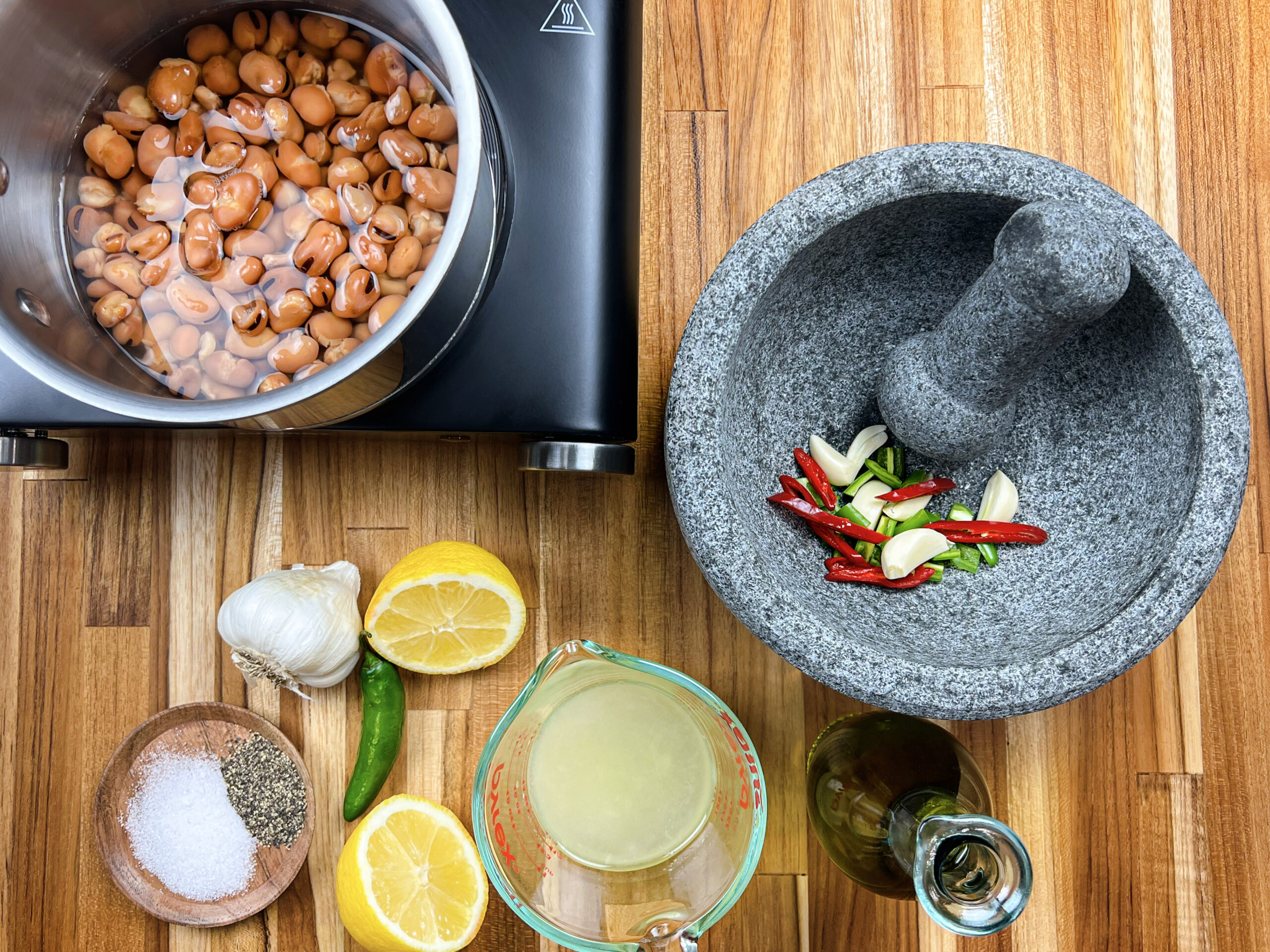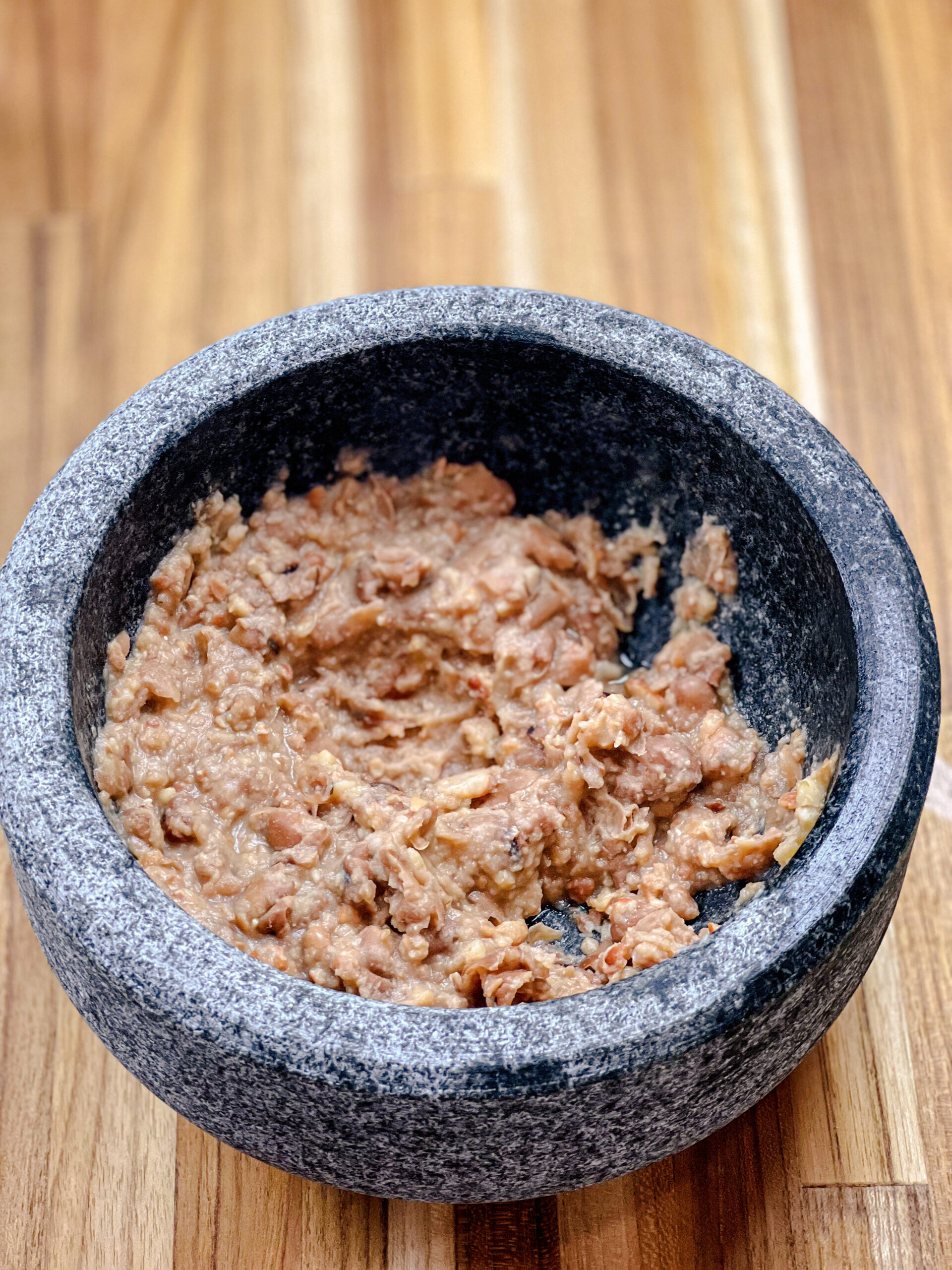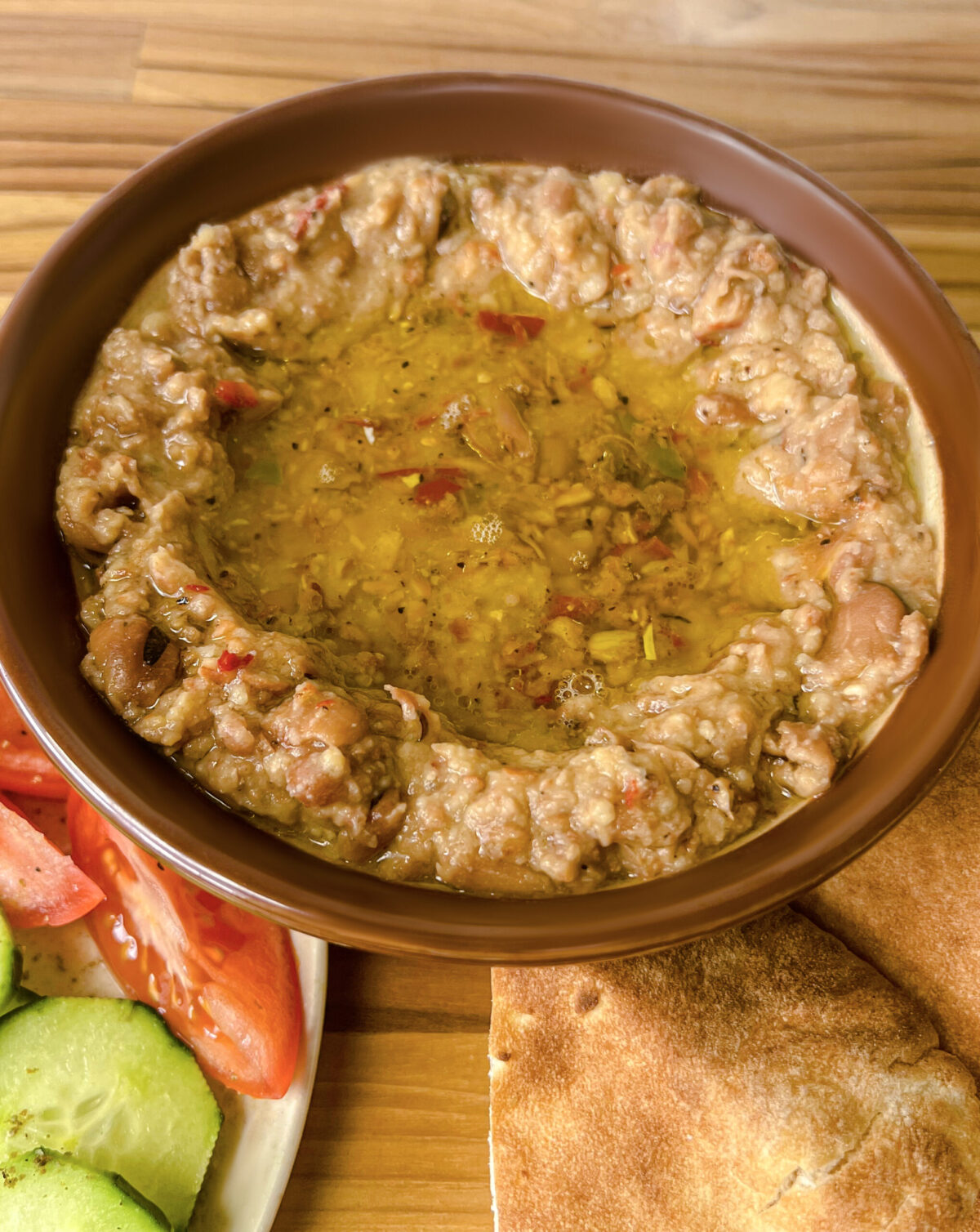An all-time favorite, my kids can’t get enough of this one-dish wonder when they visit—a staple for a hearty breakfast
Foul Mudammas is a classic and beloved dish in Middle Eastern cuisine with a rich history dating back thousands of years. Each country in the region has its unique take on the recipe, but it’s believed to have originated in Egypt, where it has been a staple for centuries.
The name “foul” comes from the Arabic word for fava beans, the main ingredient in this hearty dish. Fava beans have been a part of Egyptian cuisine since ancient times, and they were even served to the pharaohs. Today, foul mudammas is enjoyed by people from all walks of life, from street vendors to high-end restaurants. Let’s delve into this Middle Eastern culinary treasure’s fascinating history, preparation, and health benefits.
What Is Foul Mudammas?
Foul Mudammas, a classic Middle Eastern delight, begins with soaking fava beans overnight for a tender touch. Boiling them until creamy, these beans transform into a smooth texture after a gentle mash. What takes this dish to the next level is a zesty chili oil salsa crafted with an aromatic mix of spices and chili peppers. Drizzled atop adds a flavorful and spicy kick, making each bite a culinary adventure.
Traditionally, foul mudammas is served as part of a Middle Eastern breakfast spread, alongside other favorites like hummus shakshuka, accompanied by warm pita bread or taboon bread and fresh vegetables like tomatoes, cucumbers, and onions, foul mudammas can be enjoyed as a hearty and satisfying meal at any time of day.
Foul Mudammas Ingredients
Tips to Make the Best Foul Mudammas
- Using Quality Fava Beans: You can use canned fava beans for this dish, but drain and rinse them to remove some sodium, making the process easier. There are plenty of excellent brands of fava beans available on the market. You can also find them on Amazon if not in your local grocery store.
- Preparing Dry Fava Beans: If you opt for dry fava beans, soak them overnight in plenty of water to help soften them before cooking. This step is crucial for achieving the desired creamy texture in your foul mudammas.
- Texture Variation: When mashing the fava beans, consider leaving some beans whole for added texture in the final dish. It can add a delightful contrast to the velvety consistency.
- Utilizing Bean Cooking Water: After cooking the fava beans, don’t discard the water. Save some of it, as it can be added to the foul to adjust the consistency to your liking.
- Adjusting Spiciness: The salsa for foul mudammas consists of garlic and chilis smashed and whisked with fresh lemon juice and good olive oil. You have control over the spiciness level—add hot pepper to suit your taste preferences.
- Adding Freshness and Depth: For added freshness, serve the foul with various fresh herbs, such as parsley or cilantro. Additionally, you can enhance the dish’s complexity by incorporating toppings like diced tomatoes, sliced onions, or pickled vegetables, providing depth of flavor and visual appeal.
Step-by-Step Instructions

Add the fava beans to a small saucepan and cover them with fresh water. Bring the water to a boil for about 4 minutes and then turn off the heat.

To the bowl with the garlic and peppers, add salt, fresh lemon juice, and olive oil. Whisk everything together and set the bowl aside.

Transfer the beans to the mortar and smash them until they are broken, but not too fine. If the mixture is too dry, add a spoon or two of the reserved water and mix it in with the fava beans.

Serve the Foul Mudamas with warm, fresh pita bread and enjoy!
Ingredients:
| 1 can fava beans |
For the Salsa:
| 3 garlic cloves (roughly chopped) | |
| 1 jalapeno pepper (seed was removed and chopped ) | |
| ½ red hot pepper (seeds removed and chopped) | |
| ¼ cup lemon juice | |
| ½ cup good olive oil | |
| ½ teaspoon salt | |
| ½ teaspoon cumin (optional) |
Preparation
Recipe Tips & Suggestions
Can You Store Foul Mudammas?
Nutrition Information
The information shown is an estimate provided by an online nutrition calculator. It should should not be considered a substitute for a professional nutritionist's advice.
See our full nutrition disclosure here.







Have you tried making the authentic Foul Mudammas dish yet? Please share in the comments how it turned out.